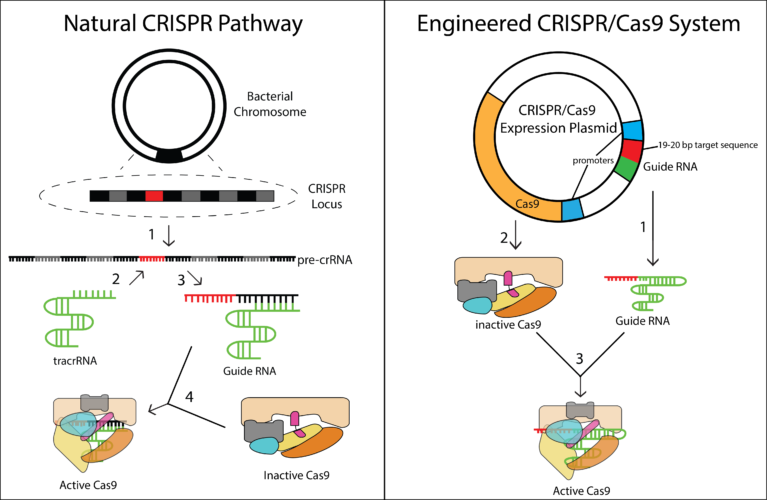Advanced Gene Editor: Precise Complete Gene Insertion

Table of Contents
Techniques for Achieving Precise Complete Gene Insertion
Several cutting-edge techniques are driving progress in precise complete gene insertion, each with its own strengths and weaknesses.
CRISPR-Cas Systems and Their Advancements
CRISPR-Cas systems have revolutionized gene editing. Their ability to target specific DNA sequences makes them ideal for precise complete gene insertion. Early CRISPR applications often resulted in imprecise insertions or unintended edits. However, advancements like base editing and prime editing significantly improve the accuracy and efficiency of gene insertion. Base editing allows for single-base changes without creating a double-stranded DNA break, reducing off-target effects. Prime editing, a more recent development, offers even greater flexibility, enabling targeted insertions, deletions, and base changes with high precision.
- Improved targeting efficiency: Enhanced guide RNA design and improved Cas enzyme variants minimize off-target effects.
- Reduced off-target effects: Minimizing unintended edits is crucial for safe and effective gene editing.
- Ability to insert larger gene sequences: Advancements are expanding the size of DNA sequences that can be precisely inserted.
Homologous Recombination-Based Methods
Homologous recombination (HR) is a natural cellular process that uses homologous DNA sequences as templates for repair. This inherent cellular mechanism can be harnessed for precise complete gene insertion. Scientists introduce a donor DNA template containing the desired gene sequence, flanked by regions homologous to the target site. The cell's natural repair mechanisms then integrate the donor DNA into the genome, replacing or inserting the target gene. Efficiency can be further enhanced through techniques like using specific cell types with high HR rates or employing agents that increase HR activity.
- Use of donor DNA templates: Precisely designed DNA templates ensure the accurate insertion of the desired gene.
- Increasing efficiency through various methods: Optimizing conditions and employing gene editing tools increases the likelihood of successful gene insertion.
Transposon-Based Systems
Transposons, or "jumping genes," are mobile genetic elements that can move within a genome. They can be engineered to deliver genes to specific locations, providing a relatively simple and efficient method for gene insertion. However, transposon-based systems may exhibit lower precision compared to CRISPR-Cas or HR-based methods, as they are less predictable in their integration sites. This can lead to off-target insertions and potentially disrupt other essential genes.
- Simplicity: Transposon systems are relatively easy to design and implement.
- Efficiency in certain contexts: These systems can be highly efficient in specific cell types or organisms.
- Potential for off-target insertions: This method carries a higher risk of inserting the gene into unintended locations.
Applications of Precise Complete Gene Insertion
The ability to precisely insert genes opens up countless possibilities across various scientific fields.
Gene Therapy
Precise complete gene insertion is poised to revolutionize gene therapy. It offers a powerful tool to correct faulty genes responsible for inherited diseases. By precisely inserting a functional copy of the gene, it may be possible to cure or significantly alleviate the symptoms of diseases like cystic fibrosis, sickle cell anemia, and many others.
- Correcting faulty genes: Replacing mutated genes with functional ones can effectively treat genetic disorders.
- Introducing functional genes: Introducing genes with therapeutic benefits can enhance the body's ability to fight disease.
- Potential for long-term cures: Precise gene insertion holds the promise of long-lasting therapeutic effects, potentially eliminating the need for lifelong treatments.
Biotechnology and Agriculture
In agriculture, precise complete gene insertion allows for the development of crops with improved yields, enhanced nutritional value, and increased resistance to pests and diseases. This technology offers sustainable solutions to global food security challenges.
- Increased food production: Genetically modified crops can produce higher yields with fewer resources.
- Reduced reliance on pesticides: Pest-resistant crops can minimize the need for harmful pesticides.
- Improved crop quality: Modifying genes can lead to enhanced nutritional content and improved flavor.
Basic Research
Precise complete gene insertion is an invaluable tool in basic biological research. It allows scientists to create genetically modified model organisms, facilitating studies on gene function, regulation, and interactions. This is crucial for advancing our understanding of fundamental biological processes.
- Creating genetically modified model organisms: Genetically modified organisms are used to study gene function in a controlled setting.
- Studying gene interactions: Precise gene insertion can be used to study how genes interact with each other and their effects on an organism.
- Facilitating functional genomics studies: This technology helps in understanding the function of genes within their complex biological context.
Challenges and Future Directions in Precise Complete Gene Insertion
Despite its enormous potential, challenges remain in realizing the full potential of precise complete gene insertion.
Off-target Effects and Safety Concerns
Minimizing off-target effects and ensuring the safety of gene editing techniques are paramount. Rigorous safety testing and improved targeting strategies are necessary to minimize the risks associated with these technologies.
- Improved targeting specificity: Further advancements in gene editing tools can reduce off-target edits.
- Rigorous safety testing: Thorough testing is essential to ensure the safety and efficacy of gene editing therapies.
- Ethical considerations: Ethical considerations must guide the development and application of these technologies.
Delivery Methods and Efficiency
Efficient delivery of the gene editing machinery to target cells remains a major challenge. Advancements in viral and non-viral delivery methods are crucial for improving the efficiency of gene insertion.
- Developing more efficient delivery systems: Improving delivery systems is essential for maximizing the effectiveness of gene editing therapies.
- Optimizing gene insertion protocols: Optimizing protocols can enhance the efficiency and precision of gene insertion.
Ethical Considerations and Regulation
The ethical implications of gene editing technologies, particularly germline editing, require careful consideration. Robust regulatory frameworks are essential to guide the responsible development and application of these powerful technologies.
- Germline editing: The ethical implications of modifying genes that can be passed down to future generations require careful deliberation.
- Informed consent: Informed consent is crucial when using gene editing technologies in human subjects.
- Responsible innovation: Responsible innovation must guide the development and use of these technologies to maximize benefits and minimize risks.
Conclusion
Precise complete gene insertion represents a significant leap forward in genetic engineering. Its high precision, efficiency, and wide-ranging applications across medicine, biotechnology, and agriculture hold immense promise. However, addressing challenges related to safety, delivery, and ethical considerations is crucial for the responsible development and implementation of this powerful technology. Learn more about the advancements in precise complete gene insertion and its potential to transform healthcare, biotechnology, and beyond. Investigate the latest research on precise complete gene insertion for gene therapy, or explore the possibilities of precise gene insertion in agricultural advancements.

Featured Posts
-
 Crispr Mediated Whole Gene Insertion A Powerful New Tool For Human Genome Editing
May 30, 2025
Crispr Mediated Whole Gene Insertion A Powerful New Tool For Human Genome Editing
May 30, 2025 -
 Upcoming Air Jordan Releases June 2025 Preview And Buying Guide
May 30, 2025
Upcoming Air Jordan Releases June 2025 Preview And Buying Guide
May 30, 2025 -
 Elon Musks Daughter Vivian Modeling Debut After Reported Family Rift
May 30, 2025
Elon Musks Daughter Vivian Modeling Debut After Reported Family Rift
May 30, 2025 -
 Self Titled Album Kae Tempest Announces Extensive Uk And Eu Tour
May 30, 2025
Self Titled Album Kae Tempest Announces Extensive Uk And Eu Tour
May 30, 2025 -
 A69 Un Accord Politique Pour Debloquer Le Projet
May 30, 2025
A69 Un Accord Politique Pour Debloquer Le Projet
May 30, 2025
